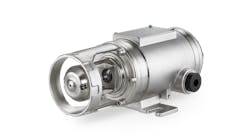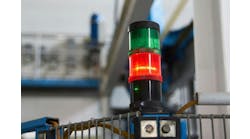To reduce useless alarm cascades and secure useful alarms, more than 70% of process control users are performing alarm rationalizations, migrating from old systems, adopting alarm management programs, and complying with applicable standards like ISA 18.2, EEMUA 191 and IEC 62682, according to “Alarm Management for the Process Industries” by Larry O’Brien, vice president of research at ARC Advisory Group, which surveyed close to 200 end users, consultants and suppliers. Almost half the respondents conducted an alarm rationalization onsite, while 21.6% undertook a companywide alarm project.
The report adds the current crisis in alarm management began when modern DCSs dropped the cost of adding new alarms to zero, which triggered a huge proliferation of alarms, and made truly critical alarm data invisible to many operators, resulting in incidents and unplanned downtime.
When asked if they’ve completed a large alarm migration or modernization project or just upgraded existing applications or software, more than 35% of respondents said they performed minor upgrades. The rest were fairly evenly distributed among those who implemented new projects, migrated to a new solution from a new supplier, or migrated to a new solution from the same supplier.
[javascriptSnippet]
Not surprisingly, the respondents reported that the most prevalent standards and guidelines for alarm management are:
- ISA 18.2 at 72.0%,
- Engineering Equipment and Material Users Association (EEMUA) 191 at 47.5%,
- IEC 62682 at 19.5%,
- 49 CFR 195.446 at 5.1%, and
- NAMUR NA 102 at 4.2%.
Despite these rules and recommendations, the main challenges respondents face in implementing alarm management are human issues, such as securing buy-in from operators and management, and finding time, money and resources. Secondary hurdles include: alarm philosophy development, configuration issues, developing or redefining KPIs, ease of use and database issues, finding subject matter experts, developing common work processes and procedures, and resistance to change by personnel. Tertiary challenges include keeping alarm rationalization up to date; management of change; implementing dynamic alarming; and achieving consistency in alarm management while dealing with disparate data sources.
To find alarm management suppliers, slightly more than half of respondents (55.9%) go to DCS or primary automation suppliers, while slightly less than half (44.1%) go to independent, third-party suppliers. When asked to rate key, business-oriented selection criteria for alarm management, most users ranked product and application support and overall supplier product knowledge of the alarm management domain as most critically important. Overall supplier knowledge of the DCS domain was also ranked as critically important by more than 42% of respondents. Clearly, even third party suppliers must have good knowledge of the DCSs that the alarm management system will work with.
[sidebar id =1]
Alarm rationalization project support was ranked as critical by close to 29% of respondents. In addition, overall supplier knowledge of DCSs was ranked as critically important by more than 28% of respondents. However, supplier market share was last on the list of priorities, and so most respondents didn’t feel that a supplier’s market presence alone indicated a good solution.
[For technical selection criteria and more information about the report, contact Larry O’Brien at 339-793-3317 or [email protected]. With more than 20 years of alarm management research, ARC analysts have also developed criteria to help users choose the best available alarm management solutions.]



